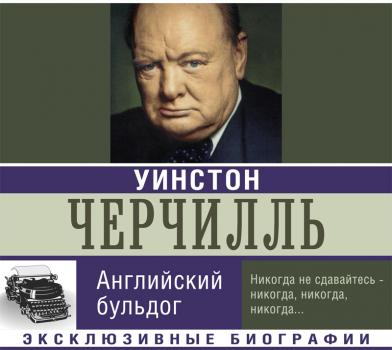MREADZ.COM - много разных книг на любой вкус
Скачивание или чтение онлайн электронных книг.Уинстон Черчилль. Английский бульдог
Аудиокнига о самом величайшем британце в истории! Бывают ли люди, которым удается все, за что они берутся? Люди, одаренные таким букетом талантов, какого хватило бы на десятерых, и силой воли, способной преодолеть любые преграды? По крайней мере один такой человек точно существовал. Во всем мире его знают прежде всего как одного из победителей Гитлера, но занимаясь судьбами мира, он успевал еще писать книги, рисовать картины, увлекаться наукой, пилотировать самолеты и дирижабли и делать сотню других дел. Премьер министр Великобритании, лауреат Нобелевской премии по литературе, лучший оратор XX века и, наконец, просто человек, признанный величайшим британцем в истории – Уинстон Черчилль. © Мишаненкова Е.А. © Оформление. ООО «Издательство АСТ», 2015 © & ℗ ООО «Аудиокнига», 2018 Продюсер аудиозаписи: Татьяна Плюта
Призраки
Исследователи неоднократно отмечали, что многие главы «Призраков», несмотря на их фантастический колорит, написаны либо по личным впечатлениям Тургенева (описание Лаго-Маджоре, Понтийских болот, острова Уайта, окрестностей Рима), либо являются переработкой семейных преданий (глава о Степане Разине). «Призраки» отличаются точностью пейзажных зарисовок различных мест Европы, сделанных как бы с натуры, но особенная достоверность соблюдена Тургеневым при описании усадьбы героя, воспроизводящем Спасское-Лутовиново (пруд, плотина, усаженная ракитами дорога, березовая рощица). Оценки империи Наполеона III и самодержавного Петербурга также очень близки к суждениям самого Тургенева и зачастую являются почти дословными цитатами из его писем.
Комплексный экономический анализ предприятия. Учебник для вузов
Основной целью учебника является отражение роли экономического анализа в управлении коммерческими организациями, в разработке теоретических положений и практических рекомендаций по совершенствованию методик анализа себестоимости, прибыли, рентабельности, внешнеэкономической деятельности, для эффективного менеджмента. В учебнике изложены теоретические основы и прикладные вопросы экономического анализа в соответствии с новыми государственными стандартами, также учебник содержит новые направления анализа, не представленные как в предыдущем учебнике коллектива кафедры экономического анализа (2007 г.), так и в учебниках и монографиях других авторов. Методика анализа, представленная в каждом разделе учебника, проиллюстрирована на конкретных примерах, отражающих хозяйственные и финансовые ситуации. Содержание соответствует программам обучения студентов по экономическим специальностям, а также программам подготовки и переподготовки профессиональных бухгалтеров, аудиторов и финансовых менеджеров в системе Министерства финансов РФ.
Институциональная экономика. Учебное пособие
В книге представлен базовый курс институциональной экономической теории, отражены основные разделы классического и современного институционального направления, раскрывается методология исследования проблематики, место и роль дисциплины в экономической науке на микро- и макроуровнях. Пособие включает вопросы и задания для самостоятельной работы, учебно-методические материалы и рекомендуемую литературу. Допущено Учебно-методическим объединением по образованию в области производственного менеджмента в качестве учебного пособия для студентов, обучающихся по направлению подготовки 080200 «Менеджмент». Учебное пособие подготовлено в соответствии с новыми образовательными стандартами третьего поколения и предназначено для студентов, магистрантов, аспирантов, а также преподавателей вузов, руководителей, предпринимателей и всех интересующихся проблематикой институциональной экономики.
Бизнес-планирование. Учебное пособие
В книге рассмотрены теоретические и прикладные аспекты планирования, необходимые студентам направления подготовки «Менеджмент» для изучения дисциплины «Бизнес-планирование». Освещены методическое и информационное обеспечение процесса планирования, структура и содержание бизнес-плана, даны технологии и инструментарий бизнес-планирования. Особое внимание уделено вопросам выработки и презентации бизнес-идей, формирования и оценки бизнес-моделей. Подробно раскрываются вопросы анализа рынка, стратегии маркетинга, операционного и финансового планирования, оценки и анализа экономической эффективности бизнес-проектов, а также применения в бизнес-планировании современных информационных технологий. Учебное пособие разработано в соответствии с требованиями ФГОС ВПО третьего поколения по направлению подготовки 080200 «Менеджмент», квалификация «бакалавр». Предназначено для преподавателей и студентов экономических вузов. Рекомендуется руководителям и менеджерам предприятий, специалистам, предпринимателям, менеджерам проектов и всем, кто изучает бизнес-планирование и современный менеджмент. (CD прилагается только к печатной версии издания.)
Информатика. Базовый курс. Учебник для вузов
В учебнике рассмотрены основные категории аппаратных и программных средств вычислительной техники. Указаны базовые принципы построения архитектур вычислительных систем. Обеспечено методическое обоснование процессов взаимодействия информации, данных и методов. Приведены эффективные приемы работы с распространенными программными продуктами. Рассмотрены основные средства, приемы и методы программирования. Книга предназначена для студентов технических вузов, изучающих информационные технологии в рамках дисциплины «Информатика», для преподавательского состава, для слушателей военных учебных заведений, учреждений системы повышения квалификации и для лиц, изучающих средства вычислительной техники самостоятельно. Третье издание учебника полностью обновлено в соответствии с современной ситуацией в области аппаратных и программных средств, в частности в книге рассмотрена работа в Microsoft Windows 7 и Office 2010. Рекомендовано Министерством образования и науки Российской Федерации в качестве учебного пособия для студентов высших технических учебных заведений.
Основы логистики. Учебник для вузов
Учебник отражает коллективный авторский взгляд на логистику как сферу предпринимательской деятельности по управлению материальными, информационными, финансовыми и другими потоками. Освещает основные концепции логистики, обосновывает функциональное единство и эффективность логистических решений. Обучает применению инновационных методов и форм реализации фундаментальных принципов – правил логистики, содержание которых непрерывно обогащается благодаря ее научной ориентации на обслуживание хозяйственных связей и управление цепями поставок клиентов. Учебник предназначен для студентов, обучающихся по специальностям 080506 «Логистика и управление цепями поставок», 351300 «Коммерция (торговое дело)», другим экономическим специальностям, слушателей системы бизнес-образования, а также практических работников, которые занимаются разработкой и реализацией логистических решений.
Территориальный маркетинг. Учебное пособие
В учебном пособии представлена современная концепция территориального управления. Рассматриваются основные вопросы территориального маркетинга: маркетинговая среда территории, комплекс средств территориального маркетинга, сегментация, позиционирование и дифференциация территории, конкурентные преимущества и конкурентоспособность территории, деловые стратегии развития территории. Анализируется поведение потребителей в территориальном маркетинге, представлен процесс внедрения маркетинга, значительное внимание уделяется реализации территориального маркетинга страны, региона, муниципального образования. Учебное пособие предназначено для студентов высших учебных заведений, обучающихся по специальности «Государственное и муниципальное управление», аспирантов, преподавателей вузов, научных работников, государственных и муниципальных служащих, а также всех интересующихся проблемами социально-экономического развития территории.
Общая и частная медицинская реабилитология: научно-методические и практические основы
В книге приведены современные представления о медицинской реабилитации. В первой части проанализирована информация общего характера о теории и методологии реабилитологии. Во второй части изложены факты по частной реабилитологии и даны практические рекомендации по ведению пациентов на реабилитационном этапе: рассмотрены оптимальные комплексы реабилитационных мероприятий при наиболее распространенной патологии – сердечно-сосудистые заболевания, инсульт, патология суставов различного генеза, травматология, онкология. Книга предназначена для врачей-реабилитологов, терапевтов, кардиологов, неврологов, врачей общей практики, травматологов-ортопедов, онкологов, физиотерапевтов и представителей смежных специальностей.
Информационная безопасность: нормативно-правовые аспекты
В учебном пособии рассмотрены организационные и правовые аспекты в области информационных технологий с учетом изменений законодательства Российской Федерации на конец 2007 года. Представлен обширный справочный материал по основным нормативным правовым актам Российской Федерации в области информационной безопасности и правовых вопросов, связанных с использованием информационных технологий; описана организационная структура государственных органов. Для студентов высших учебных заведений, обучающихся по специальностям в области информационной безопасности, слушателей курсов повышения квалификации по проблемам защиты информации. Рассмотренные вопросы могут быть полезны как техническим специалистам, так и руководителям, курирующим вопросы обеспечения информационной безопасности. Допущено Учебно-методическим объединением по образованию в области информационной безопасности в качестве учебного пособия для студентов высших учебных заведений, обучающихся по специальностям 090102 «Компьютерная безопасность», 090105 «Комплексное обеспечение информационной безопасности автоматизированных систем».









